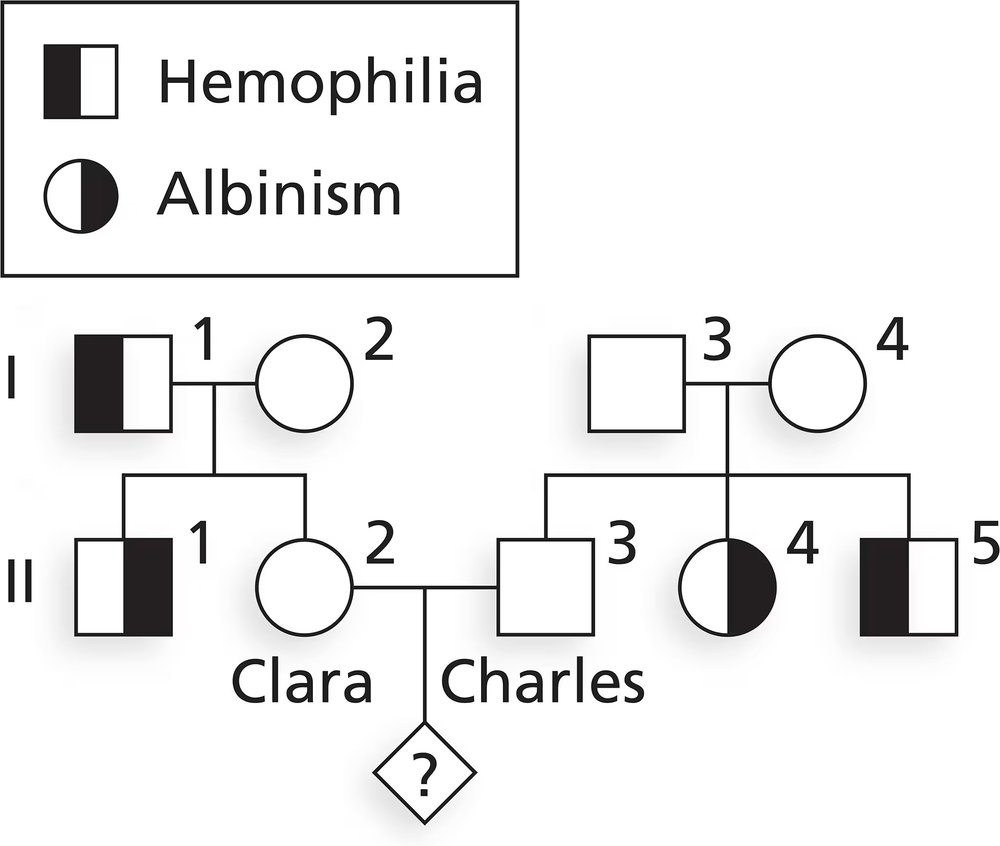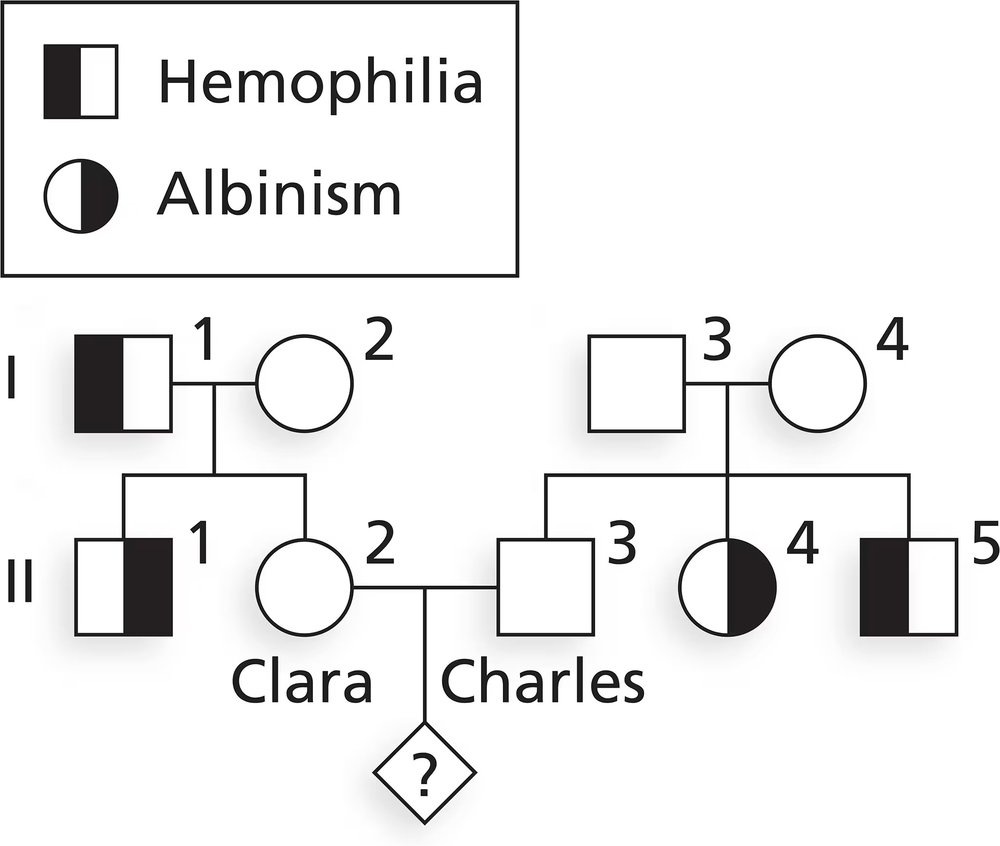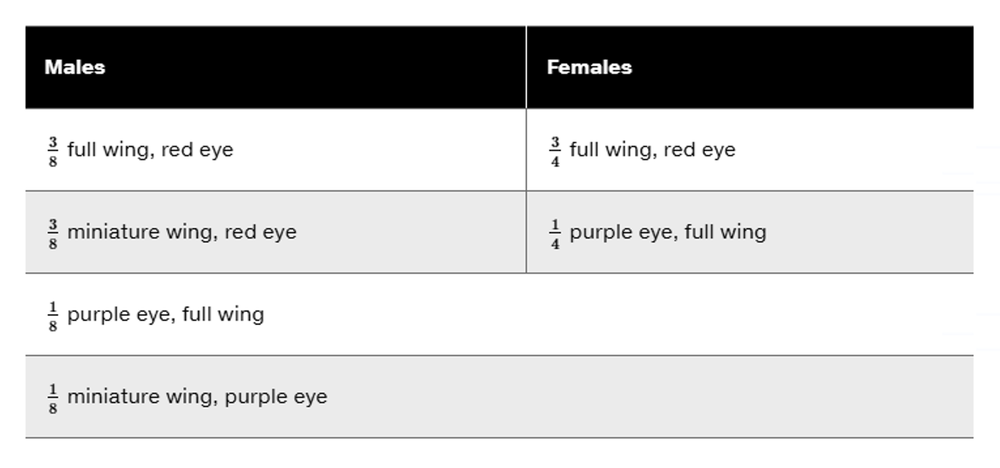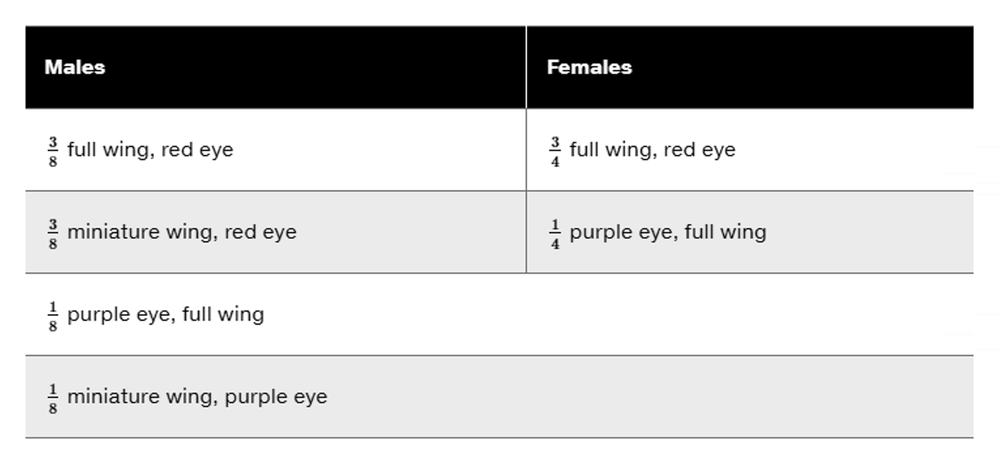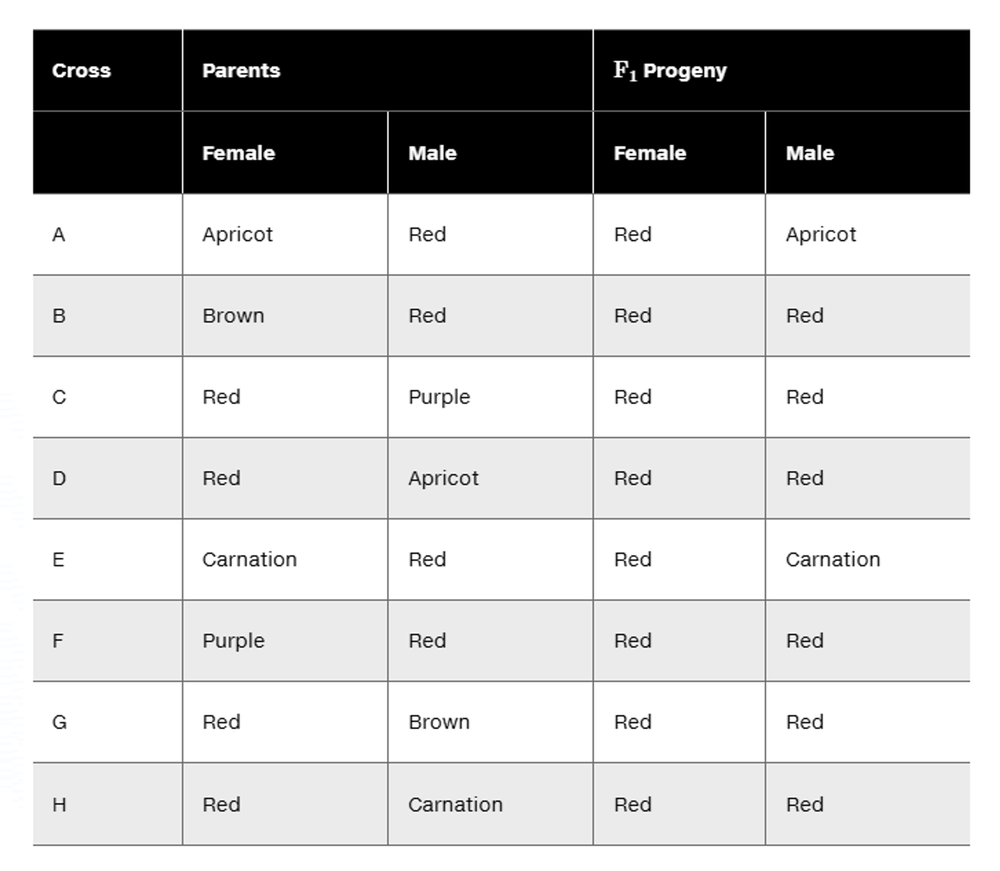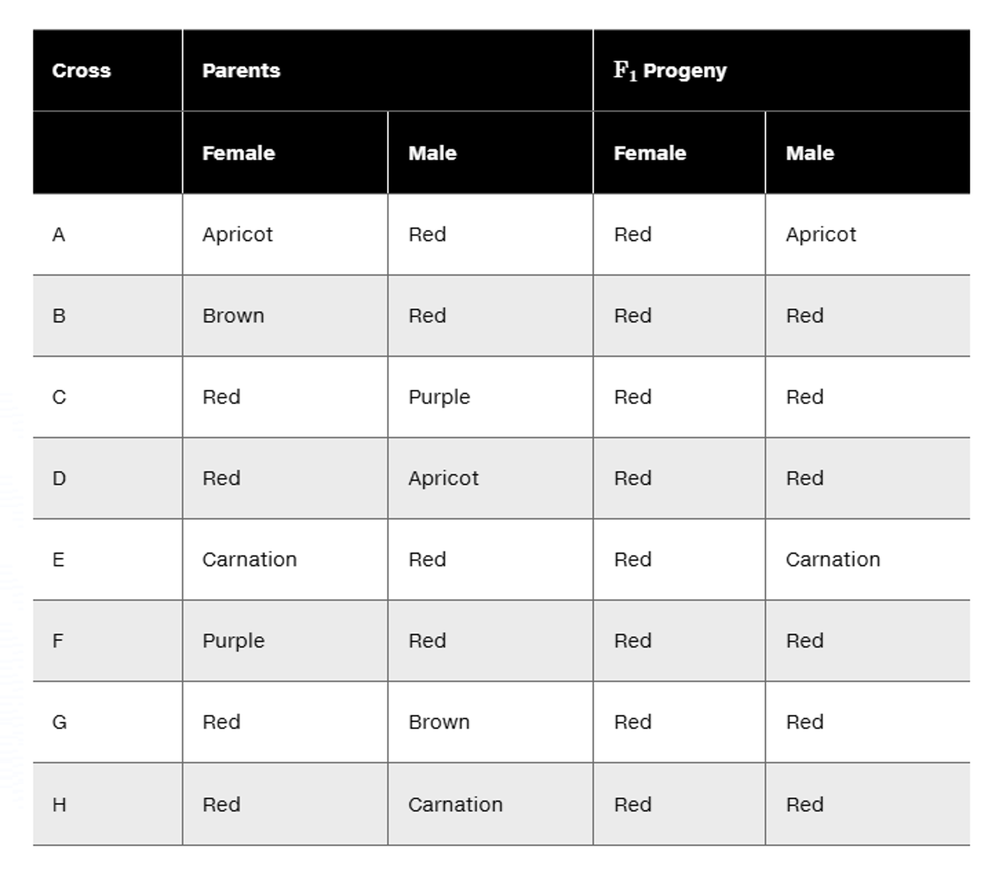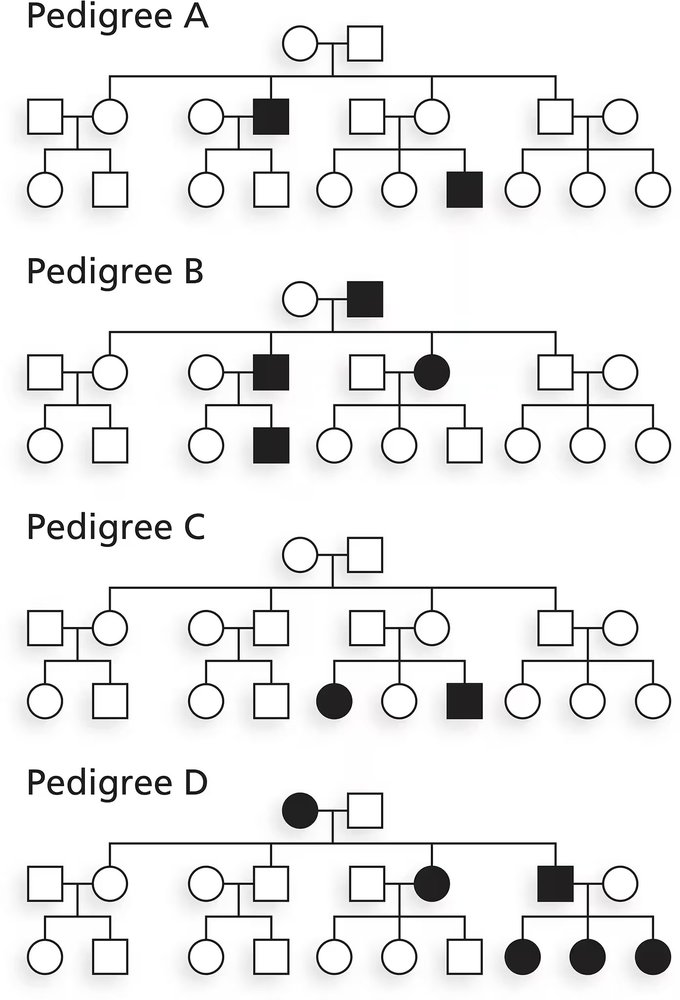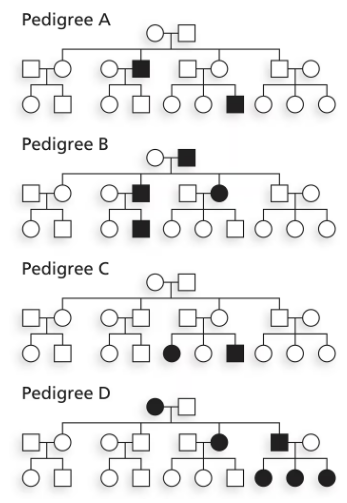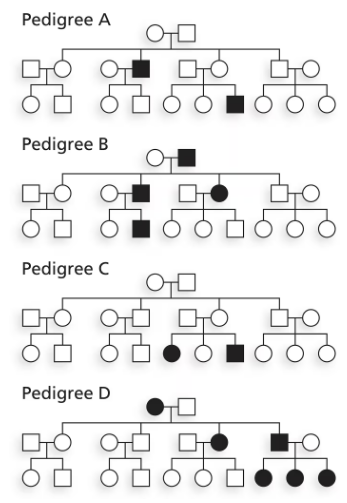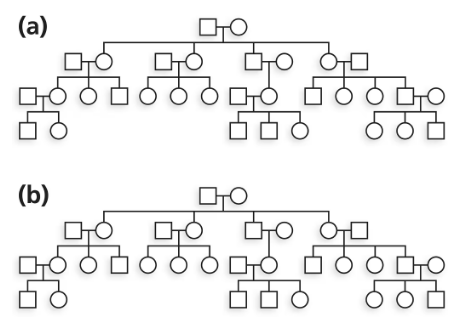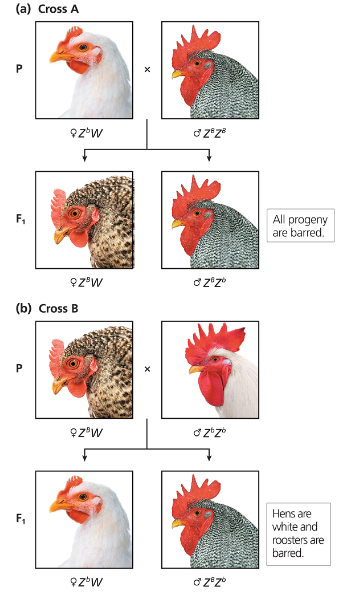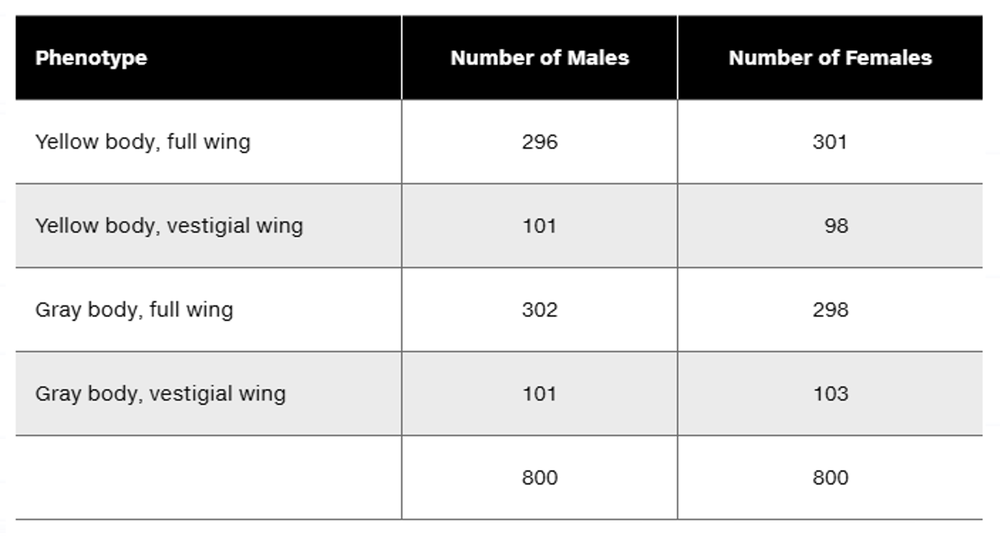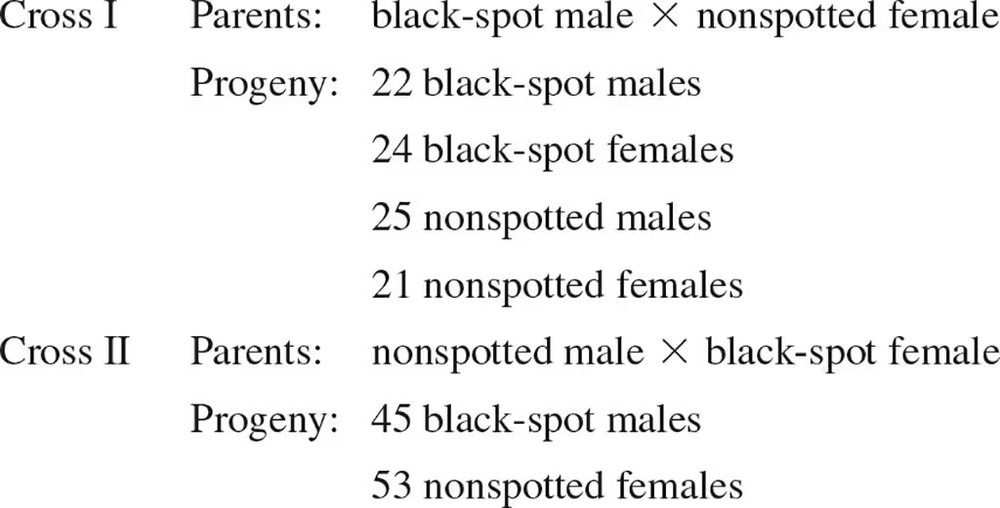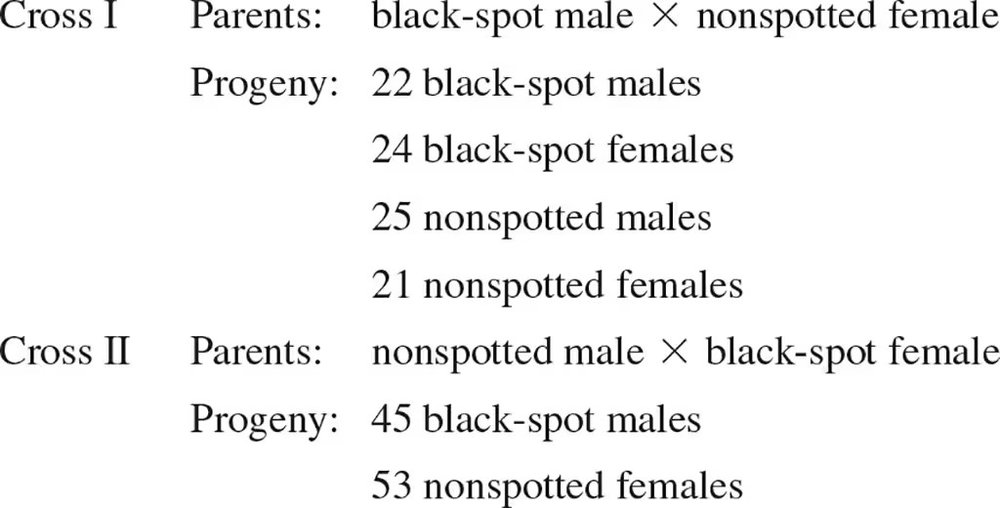 Back
BackProblem 11b
Describe the role of the following structures or proteins in cell division:
Cohesin protein
Problem 11c
Describe the role of the following structures or proteins in cell division:
Kinetochores
Problem 11d
Describe the role of the following structures or proteins in cell division:
Synaptonemal complex
Problem 12a
A woman's father has ornithine transcarbamylase deficiency (OTD), an X-linked recessive disorder producing mental deterioration if not properly treated. The woman's mother is homozygous for the wild-type allele.
What is the woman's genotype? (Use D to represent the dominant allele and d to represent the recessive allele.)
Problem 12b
A woman's father has ornithine transcarbamylase deficiency (OTD), an X-linked recessive disorder producing mental deterioration if not properly treated. The woman's mother is homozygous for the wild-type allele.
If the woman has a son with a man who does not have OTD, what is the chance the son will have OTD?
Problem 12c
A woman's father has ornithine transcarbamylase deficiency (OTD), an X-linked recessive disorder producing mental deterioration if not properly treated. The woman's mother is homozygous for the wild-type allele.
If the woman has a daughter with a man who does not have OTD, what is the chance the daughter will be a heterozygous carrier of OTD? What is the chance the daughter will have OTD?
Problem 12d
A woman's father has ornithine transcarbamylase deficiency (OTD), an X-linked recessive disorder producing mental deterioration if not properly treated. The woman's mother is homozygous for the wild-type allele.
Identify a male with whom the woman could produce a daughter with OTD.
Problem 12e
A woman's father has ornithine transcarbamylase deficiency (OTD), an X-linked recessive disorder producing mental deterioration if not properly treated. The woman's mother is homozygous for the wild-type allele.
What proportion of daughters produced by the woman and the man are expected to have OTD? What proportion of sons of the woman and the man are expected to have OTD?
Problem 13a
In humans, hemophilia A (OMIM 306700) is an X-linked recessive disorder that affects the gene for factor VIII protein, which is essential for blood clotting. The dominant and recessive alleles for the factor VIII gene are represented by H and h. Albinism is an autosomal recessive condition that results from mutation of the gene producing tyrosinase, an enzyme in the melanin synthesis pathway. A and a represent the tyrosinase alleles. A healthy woman named Clara (II-2), whose father (I-1) has hemophilia and whose brother (II-1) has albinism, is married to a healthy man named Charles (II-3), whose parents are healthy. Charles's brother (II-5) has hemophilia, and his sister (II-4) has albinism. The pedigree is shown below.
What are the genotypes of the four parents (I-1 to I-4) in this pedigree?
Problem 13b
In humans, hemophilia A (OMIM 306700) is an X-linked recessive disorder that affects the gene for factor VIII protein, which is essential for blood clotting. The dominant and recessive alleles for the factor VIII gene are represented by H and h. Albinism is an autosomal recessive condition that results from mutation of the gene producing tyrosinase, an enzyme in the melanin synthesis pathway. A and a represent the tyrosinase alleles. A healthy woman named Clara (II-2), whose father (I-1) has hemophilia and whose brother (II-1) has albinism, is married to a healthy man named Charles (II-3), whose parents are healthy. Charles's brother (II-5) has hemophilia, and his sister (II-4) has albinism. The pedigree is shown below.
Determine the probability that the first child of Clara and Charles will be a
i. boy with hemophilia
ii. girl with albinism
iii. healthy girl
iv. boy with both albinism and hemophilia
v. boy with albinism
vi. girl with hemophilia
Problem 13c
In humans, hemophilia A (OMIM 306700) is an X-linked recessive disorder that affects the gene for factor VIII protein, which is essential for blood clotting. The dominant and recessive alleles for the factor VIII gene are represented by H and h. Albinism is an autosomal recessive condition that results from mutation of the gene producing tyrosinase, an enzyme in the melanin synthesis pathway. A and a represent the tyrosinase alleles. A healthy woman named Clara (II-2), whose father (I-1) has hemophilia and whose brother (II-1) has albinism, is married to a healthy man named Charles (II-3), whose parents are healthy. Charles's brother (II-5) has hemophilia, and his sister (II-4) has albinism. The pedigree is shown below.
If Clara and Charles's first child has albinism, what is the chance the second child has albinism? Explain why this probability is higher than the probability you calculated in part (b).
Problem 14a
A wild-type male and a wild-type female Drosophila with red eyes and full wings are crossed. Their progeny are shown below.
Using clearly defined allele symbols of your choice, give the genotype of each parent.
Problem 14b
A wild-type male and a wild-type female Drosophila with red eyes and full wings are crossed. Their progeny are shown below.
What is/are the genotype(s) of females with purple eye? Of males with purple eye and miniature wing?
Problem 15
A woman with severe discoloration of her tooth enamel has four children with a man who has normal tooth enamel. Two of the children, a boy (B) and a girl (G), have discolored enamel. Each has a mate with normal tooth enamel and produces several children. G has six children—four boys and two girls. Two of her boys and one of her girls have discolored enamel. B has seven children—four girls and three boys. All four of his daughters have discolored enamel, but all his boys have normal enamel. Explain the inheritance of this condition.
Problem 16
In a large metropolitan hospital, cells from newborn babies are collected and examined microscopically over a 5-year period. Among approximately 7500 newborn males, six have one Barr body in the nuclei of their somatic cells. All other newborn males have no Barr bodies. Among 7500 female infants, four have two Barr bodies in each nucleus, two have no Barr bodies, and the rest have one. What is the cause of the unusual number of Barr bodies in a small number of male and female infants?
Problem 17a
In cats, tortoiseshell coat color appears in females. A tortoiseshell coat has patches of dark brown fur and patches of orange fur that each in total cover about half the body but have a unique pattern in each female. Male cats can be either dark brown or orange, but a male cat with tortoiseshell coat is rarely produced. Two sample crosses between males and females from pure-breeding lines produced the tortoiseshell females shown.
Cross I P: dark brown male × orange female
F₁: orange males and tortoiseshell females
Cross II P: orange male × dark brown female
F₁: dark brown males and tortoiseshell females
Explain the inheritance of dark brown, orange, and tortoiseshell coat colors in cats.
Problem 17b
In cats, tortoiseshell coat color appears in females. A tortoiseshell coat has patches of dark brown fur and patches of orange fur that each in total cover about half the body but have a unique pattern in each female. Male cats can be either dark brown or orange, but a male cat with tortoiseshell coat is rarely produced. Two sample crosses between males and females from pure-breeding lines produced the tortoiseshell females shown.
Cross I P: dark brown male × orange female
F₁: orange males and tortoiseshell females
Cross II P: orange male × dark brown female
F₁: dark brown males and tortoiseshell females
Why are tortoiseshell cats female?
Problem 17c
In cats, tortoiseshell coat color appears in females. A tortoiseshell coat has patches of dark brown fur and patches of orange fur that each in total cover about half the body but have a unique pattern in each female. Male cats can be either dark brown or orange, but a male cat with tortoiseshell coat is rarely produced. Two sample crosses between males and females from pure-breeding lines produced the tortoiseshell females shown.
Cross I P: dark brown male × orange female
F₁: orange males and tortoiseshell females
Cross II P: orange male × dark brown female
F₁: dark brown males and tortoiseshell females
The genetics service of a large veterinary hospital gets referrals for three or four male tortoiseshell cats every year. These cats are invariably sterile and have underdeveloped testes. How are these tortoiseshell male cats produced? Why do you think they are sterile?
Problem 18
The gene causing Coffin–Lowry syndrome (OMIM 303600) was recently identified and mapped on the human X chromosome. Coffin–Lowry syndrome is a rare disorder affecting brain morphology and development. It also produces skeletal and growth abnormalities, as well as abnormalities of motor control. Coffin–Lowry syndrome affects males who inherit a mutation of the X-linked gene. Most carrier females show no symptoms of the disease but a few carriers do. These carrier females are always less severely affected than males. Offer an explanation for this finding.
Problem 19a
Four eye-color mutants in Drosophila—apricot, brown, carnation, and purple—are inherited as recessive traits. Red is the dominant wild-type color of fruit-fly eyes. Eight crosses (A through H) are made between parents from pure-breeding lines.
Which of these eye-color mutants are X-linked recessive and which are autosomal recessive? Explain how you distinguish X-linked from autosomal heredity.
Problem 19b
Four eye-color mutants in Drosophila—apricot, brown, carnation, and purple—are inherited as recessive traits. Red is the dominant wild-type color of fruit-fly eyes. Eight crosses (A through H) are made between parents from pure-breeding lines.
Predict F2 phenotype ratios of crosses A, B, D, and G.
Problem 20a
For each pedigree shown,
Identify which simple pattern of hereditary transmission (autosomal dominant, autosomal recessive, X-linked dominant, or X-linked recessive) is most likely to have occurred. Give genotypes for individuals involved in transmitting the trait.
Problem 20b
For each pedigree shown,
Determine which other pattern(s) of transmission is/are possible. For each possible mode of transmission, specify the genotypes necessary for transmission to occur.
Problem 20c
For each pedigree shown,
Identify which pattern(s) of transmission is/are impossible. Specify why transmission is impossible.
Problem 21
Use the blank pedigrees provided to depict transmission of
(a) an X-linked recessive trait and
(b) an X-linked dominant trait, by filling in circles and squares to represent individuals with the trait of interest. Give genotypes for each person in each pedigree.
Carefully design each transmission pattern so that pedigree
(a) cannot be confused with autosomal recessive transmission and pedigree
(b) cannot be confused with autosomal dominant transmission. Identify the transmission events that eliminate the possibility of autosomal transmission for each pedigree.
Problem 22
The following figure illustrates reciprocal crosses involving chickens with sex-linked dominant barred mutation. For Cross A and for Cross B, cross the F₁ roosters and hens and predict the feather patterns of roosters and hens in the F2.
Problem 23
In fruit flies, yellow body (y) is recessive to gray body , and the trait of body color is inherited on the X chromosome. Vestigial wing (v) is recessive to full-sized wing (v⁺), and the trait has autosomal inheritance. A cross of a male with yellow body and full wings to a female with gray body and full wings is made. Based on an analysis of the progeny of the cross shown below, determine the genotypes of parental and progeny flies.
[Table below appears at this point containing crosses and results]
Problem 24a
In a species of fish, a black spot on the dorsal fin is observed in males and females. A fish breeder carries out a pair of reciprocal crosses and observes the following results.
Why does this evidence support the hypothesis that a black spot is sex linked?
Problem 24b
In a species of fish, a black spot on the dorsal fin is observed in males and females. A fish breeder carries out a pair of reciprocal crosses and observes the following results.
Identify which sex is heterogametic. Give genotypes for the parents in each cross, and explain the progeny proportions in each cross.
Problem 25a
Lesch–Nyhan syndrome (OMIM 300322) is a rare X-linked recessive disorder that produces severe mental retardation, spastic cerebral palsy, and self-mutilation.
What is the probability that the first son of a woman whose brother has Lesch–Nyhan syndrome will be affected?

